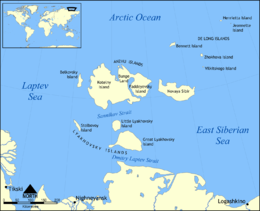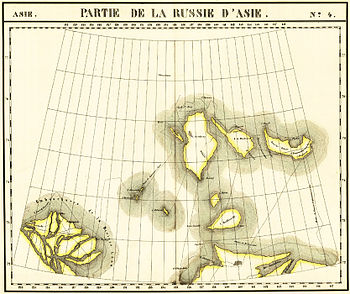MAHRA ALMAKTOUM united arab emerates + maroc country afrika+USA +TORRONTO +QUEBEC CANADA
dimanche 31 décembre 2023
gift to princess mahra almaktoum fille du premier ministre des emirats arabes unis from me i will not say my name untill i meet her.i know there is more than 800 000 persons who wants to marry meet her .among them me .yeaaaaaa. police marchals attaaaaaaack *** very amazing and attrackting and making joyfull chooooooooot bon de dieu bordel de merdel bullets inside legs of the thiefs . gooood.we catched them.we well have anormous noticias informations in addition .yeaaaaaa.weeeeeeeee.ouiiiiiii.wiiiiiiiiiiusa police marchals attaaaaaaack *** very amazing and attrackting and making joyfull inside us videos videos +music delicious elvis presley usa + country best music usa films steven seagal in sea officer general+ complet cwboy // le boon le brut le truand +musique series fimiques americaines+ usa police marchals paterouilles
lundi 4 décembre 2023
02 chanteurs marocains*/* albaz avec la belle chansson / sbah elkhir , qui veut dire quelle belle matinée n est ce pas ! et le chanteur */* marocain av amrrakchy le chanteur marocain avec la chansson belle ikjder goukhssay .qui veut dire le cameleon animal dedans et depuis des annés dedans la citrouille .ayyaye ayyae ayyae ayyaye /*/-+ vive la place jemaa al fna de marrakech ville du maroc .continent afrika
le pays New Siberian Islands
New Siberian Islands
 Location of the New Siberian Islands | |
| Geography | |
| Location | between the Laptev Sea and East Siberian Sea |
| Coordinates |  75°16′N 145°15′E 75°16′N 145°15′E |
| Archipelago | New Siberian Islands |
| Area | 29,900 km2 (11,500 sq mi) |
| Highest elevation | 374 m (1227 ft) |
| Highest point | Malakatyn Tas |
| Administration | |
| Russian Federation | |
| Federal subject | Sakha Republic |
| Demographics | |
| Population | 2 (2017) on Kotelny Island |
The New Siberian Islands (Russian: Новосиби́рские Oстрова, tr. Novosibirskiye Ostrova; Yakut: Саҥа Сибиир Aрыылара, romanized: Saŋa Sibiir Arıılara) are an archipelago in the Extreme North of Russia, to the north of the East Siberian coast between the Laptev Sea and the East Siberian Sea north of the Sakha (Yakutia) Republic, of which they are administratively a part.
History[edit]

The first news about the existence of the New Siberian Islands was brought by a Cossack, Yakov Permyakov, in the beginning of the 18th century. In 1712, a Cossack unit led by M. Vagin reached the Great Lyakhovsky Island.
In 1809–10 Yakov Sannikov and Matvei Gedenschtrom went to the New Siberian Islands on a cartographic expedition. Sannikov reported the sighting of a "new land" north of Kotelny in 1811. This became the myth of Zemlya Sannikova or Sannikov Land.[1] In 1886, Russian polar explorer and scientist Eduard Toll, during his first visit to the New Siberian Islands, thought that he had seen an unknown land north of Kotelny Island. He guessed that this was the so-called Zemlya Sannikova.[1]
Toll paid a further visit to the island group in the spring of 1892, accompanied by one Cossack and three natives. He traveled over the ice in sleds drawn by dogs and reached the south coast of Great Lyakhovsky Island.[1] Along the southern coast of this island he found well-preserved bones, ivory, peat, wood, and even a tree within 40-meter (130-foot) high sea cliffs that expose Late Pleistocene sediments. These sediments are cemented by permafrost and have accumulated periodically over the last 200,000 years.[2][3][4]
In September 2014, the Russian Navy re-established a Soviet era naval base on Kotelny Island which had lain abandoned since 1993.[5][6]
Geography[edit]

The New Siberian Islands proper, or Anzhu Islands (острова Анжу, Sakha: Анжу арыылара), covering a land area of about 29,000 km2, consist of:
- Kotelny Island (о. Коте́льный) 11,700 km2 and
- Faddeyevsky Island (о. Фадде́евский) 5,300 km2. Bunge Land (земля́ Бу́нге) 6,200 km2 (occasionally submerged by sea) links Kotelny Island and Faddeyevsky Island. Very close to Bunge Land's northwestern coast lie two smaller islands:
- Zheleznyakov Island (Ostrov Zheleznyakova), right off the NW cape and east of it, Matar Island (Ostrov Matar). Both islands have a length of about 5 km.
- Faddeyevsky Island (о. Фадде́евский) 5,300 km2. Bunge Land (земля́ Бу́нге) 6,200 km2 (occasionally submerged by sea) links Kotelny Island and Faddeyevsky Island. Very close to Bunge Land's northwestern coast lie two smaller islands:
- Nanosnyy Island
 76.283°N 140.416°E is a small island located due north off the northern bay formed by Kotelny and Bunge. It is C-shaped and only 4 km in length,
76.283°N 140.416°E is a small island located due north off the northern bay formed by Kotelny and Bunge. It is C-shaped and only 4 km in length,
but its geographical importance lies in the fact that it is the northernmost island of the New Siberian group. - Novaya Sibir (о. Но́вая Сиби́рь) 6,200 km2
- Belkovsky Island (о. Бельковский) 500 km2
To the south and nearer to the Siberian mainland lie the Lyakhovskiye Islands (6,095 km2):
- Great Lyakhovsky Island (о. Большо́й Ля́ховский) 4,600 km2
- Little Lyakhovsky Island (о. Ма́лый Ля́ховский) 1,325 km2
- Stolbovoy Island (о. Столбово́й) 170 km2
- Semyonovsky Island (о. Семёновский) 0 km2 (now submerged)
The small De Long Islands (228 km2) lie to the north-east of Novaya Sibir.
- Jeannette Island (о. Жанне́тты)
- Henrietta Island (о. Генрие́тты)
- Bennett Island (о. Бе́ннетта)
- Vilkitsky Island (о. Вильки́цкого)
- Zhokhov Island (о. Жо́хова)
The New Siberian Islands are low-lying. Their highest point is located on Bennett island, with an elevation of 426 m. They are part of the East Siberian Lowland, forming a geographical continuum with the continental plains further south.[7]
The New Siberian Islands once formed major hills within the Great Arctic Plain that covered the northern part of Late Pleistocene "Beringia" between Siberia and Alaska during the Last Glacial Maximum (Late Weichselian Epoch). These islands represent the remains of about 1.6 million square kilometers of the formerly subaerial Great Arctic Plain that now lies submerged below parts of the Arctic Ocean, East Siberian Sea, and Laptev Sea. At this plain's greatest extent, sea level was 100–120 m below modern sea-level and the coastline lay 700 to 1000 kilometers north of its current position. This plain did not undergo extensive glaciation during the Late Pleistocene or the Last Glacial Maximum because it lay in the rain shadow of the Northern European ice sheet. During the frigid polar climate of the Last Glacial Maximum, 17,000 to 24,000 BC, small passive ice caps formed on the adjacent De Long Islands. Fragments of these ice caps remain on Jeannette, Henrietta, and Bennett Islands. Traces of former small slope and cirque glaciers in the form of buried ground ice deposits are preserved on Zhokhov Island. The sea submerged the Great Arctic Plain (except for the New Siberian and other isolated islands) within a relatively short time span of 7,000 years during the Early–Middle Holocene.[8][9][10]
Geology[edit]
As noted by Digby[11] and numerous later publications, this archipelago consists of a mixture of folded and faulted sedimentary and igneous rocks ranging in age from Precambrian to Pliocene. The Lyakhovsky Islands consist of a folded and faulted assemblage of Precambrian metamorphic rocks; upper Paleozoic to Triassic sandstones and shales; Jurassic to lower Cretaceous turbidites; Cretaceous granites; and ophiolites. The Anzhu Islands consist of a highly faulted and folded assemblage of Ordovician to Devonian limestones, dolomites, sandstones, shales, volcanoclastic strata, and igneous rocks; upper Paleozoic to Triassic sandstones and shales; Jurassic to lower Cretaceous turbidites; and upper Cretaceous to Pliocene sandstones and shales. The De Long Islands consist of early Paleozoic, middle Paleozoic, Cretaceous, and Neogene sedimentary and igneous (mostly basalt) rocks. These sedimentary, metamorphic, and igneous rocks are mantled by loose Pleistocene and Holocene sediments that range in thickness from a fraction of a meter to about 35 meters (115 feet).[12][13]
Digby[11] also noted that some early papers published about the New Siberian Islands incorrectly describe them, often along with other Arctic islands (e.g. Wrangel Island), as being made either up almost entirely of mammoth bones and tusks or of ice, sand, and the bones of mammoths and other extinct megafauna. Some of these papers were written by persons (e.g. D. Gath Whitley)[14] who had never visited the New Siberian Islands and relied upon anecdotes of traders and travelers and local folklore for their descriptions of them, and other articles were written by explorers and ivory hunters untrained in either geology or other sciences. Such statements have been shown to be fictional in nature by detailed studies of the geology of the New Siberian Islands by professional geologists, paleontologists, and other scientists.[2][13][15][16]
Ivory deposits[edit]
As noted by Baron Eduard V. Toll in his account of the New Siberian Islands,[17] sizeable and economically significant accumulations of fossil ivory occur within them. The ivory, along with mammoth and other bones, are found in recent beaches, drainage areas, river terraces and river beds. The New Siberian Islands are unique in the burial and preservation of fossil ivory "in such a wonderful state of preservation that the tusks so found cannot be distinguished from the very best and purest ivory".
The abundant bones, even skeletons, of mammoth, rhinoceros, musk-ox, and other megafauna along with the mammoth ivory found in these islands are preserved by permafrost, in which they are encased.[2][12][15][18] The permafrost periodically developed in Late Pleistocene loess, solifluction, pond, and stream sediments as they accumulated. The radiocarbon dating of bones, ivory, and plants, optically stimulated luminescence dating of enclosing sediments, and uranium-thorium dating of associated peats demonstrate that they accumulated over a period of some 200,000 years. Radiocarbon dates obtained from the collagen of 87 mammoth tusks and bones collected from Faddeevsky, Kotelniy, and New Siberia islands ranged from 9470±40 BP to greater than 50,000 BP (14C).[19]
gift to princess mahra almaktoum fille du premier ministre des emirats arabes unis from me i will not say my name untill i meet her.i know there is more than 800 000 persons who wants to marry meet her .among them me .yeaaaaaa. police marchals attaaaaaaack *** very amazing and attrackting and making joyfull chooooooooot bon de dieu bordel de merdel bullets inside legs of the thiefs . gooood.we catched them.we well have anormous noticias informations in addition .yeaaaaaa.weeeeeeeee.ouiiiiiii.wiiiiiiiiiiusa police marchals attaaaaaaack *** very amazing and attrackting and making joyfull inside us videos videos +music delicious elvis presley usa + country best music usa films steven seagal in sea officer general+ complet cwboy // le boon le brut le truand +musique series fimiques americaines+ usa police marchals paterouilles
Céremonie du mariage à Chefchaouen oooh quel belles attacks des policiers canadiens et americains +et en plus de tres belles musiques dans...

-
a bhainis le Sheikha Mahra, iníon Phríomh-Aire na nÉimíríochtaí Aontaithe. sy troue met Sheikha Mahra, dogter van die eerste minister van ...
-
Shania Twain - Forever And For Always (Red Version) (Official Music Video) twitter of mahra almaktoum https://twitter.com/PRINCESSS014...
